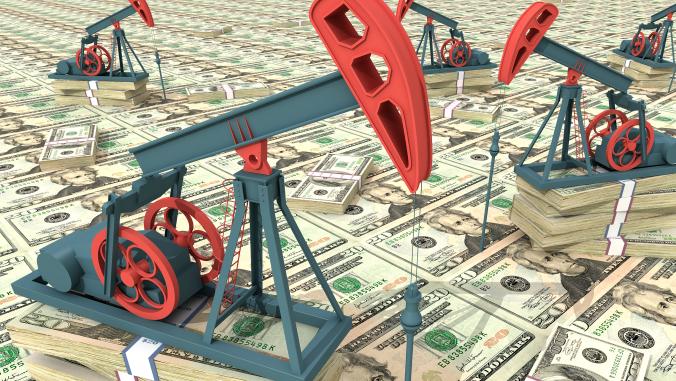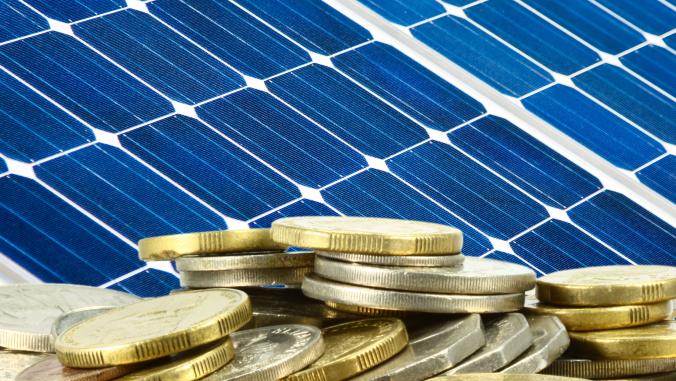Institutional investors keep weary eye on climate change
<p>A three-part series on how investment heavyweights are tracking the financial impacts of climate change.</p>

Hurricane image by justasc via Shutterstock.
To achieve the goal of keeping global temperature increases under 2 degrees Celsius, $36 trillion in global clean energy investment will have to occur by 2050, a 2012 International Energy Agency report stated. That amount averages out to approximately $1 trillion per year. However, according to research by Bloomberg New Energy Finance, only $281 billion was invested globally in clean energy in 2012.
Furthermore, as Michael Liebreich of Bloomberg told an assembly of 550 financial professionals at the United Nations last week, preliminary numbers suggest that total clean energy investment in 2013 was even lower.
The institutional investors and other professionals were at the U.N. to attend the 2014 Investor Summit on Climate Risk hosted by Ceres. The day-long event featured representatives of government, business and institutional investment organizations; the summit's agenda included presentations on climate science, the investment implications of stranded fossil fuel assets, and opportunities for increasing climate finance to the trillion dollar per year amount necessary to avoid the worst effects of global warming.
The morning session featured a presentation by Rosina Bierbaum, professor at the University of Michigan and lead author of the U.S. Climate Assessment report. If the investors in attendance needed any convincing about drastically increasing their commitment to climate finance, Bierbaum's stark descriptions of a physical environment already in transition due to climate change provided it.
The title of Bierbaum's talk was "A Perfect Storm." As she described it, the title could refer either to the effects of climate change or the significant increase in finance needed to address the climate change. "The future is in our hands," Bierbaum said.
"The physics has been known for a very long time," she continued. In 1896, Swedish scientist Svante Arrhenius made one of the earliest observations about the effect of burning fossil fuels on global climate. "He said," Bierbaum observed, "that adding carbon dioxide — a gas that traps heat from burning carbon-based fuels — would increase the temperature of the planet. If carbon dioxide doubled in the atmosphere, the temperature increase would be about 3.5 degrees Celsius. His calculations have stood the test of time, even with our increased climate modeling capability."
Bierbaum noted that the Fifth Assessment Report of the Intergovernmental Panel on Climate Change concluded that the likelihood of human agency causing climate change is 95 percent certain. "It is remarkable to get that kind of consensus from 2,000 scientists," she said.
"As carbon dioxide has increased due to the burning of carbon-based fuels, carbon dioxide has risen from 275 parts per million in the pre-industrial era to about 400 parts per million today," Bierbaum said. Temperatures during that period have increased about 0.8 degrees Celsius.
When Bierbaum arrived at the point of her talk when she talked about the effects of climate change already underway, the urgency that brought so many financial professionals to the gathering became apparent. "Sixteen of the last 18 years have been the warmest on the instrumental record," she said. "And the emerging science consensus is that negative impacts are starting to increase.
"Ecosystems are becoming disrupted. Plants are moving towards the poles or up mountains in response to climate change. Plant hardiness zones are shifting.
"Supply chain problems are becoming globalized. Countries that are already poor and subject to famine and poverty will suffer the greatest impacts."
Which does not mean that the developed nations, responsible for the overwhelming percentage of carbon emissions, will be immune from the effects of climate change. "By 2050, nearly a quarter of New York City's land area, which has 800,000 inhabitants today, will be in the flood plain," Bierbaum said.
"What will it take to be on the low-carbon pathway to keep the world's temperatures from soaring to 4 degrees Celsius?" she asked. "We have to fundamentally reform our energy systems. We need significant amounts of energy efficiency and next-generation renewable energy. There is no silver bullet. It can be done but we must start now. The current public and private investment of $281 billion a year is simply incommensurate. A fourfold increase to $1 trillion a year can bend business as usual downward and allow us to avoid a roasted world.
"We need better social safety nets and need to think hard about supply chain resilience."
"We are more responsible for our own future than any other generation," Bierbaum concluded. "Our legacy has to be that 2014 is a tipping point of cascading climate action, starting with the green trillion dollars that you are all talking about today."
Next: Prominent representatives of government, business, and institutional investment meet with journalists to discuss strategies for increasing climate finance.
This article, the first in a three-part series, originally appeared at Social Funds.
Hurricane image by justasc via Shutterstock.





